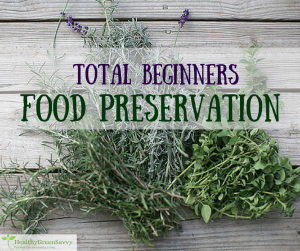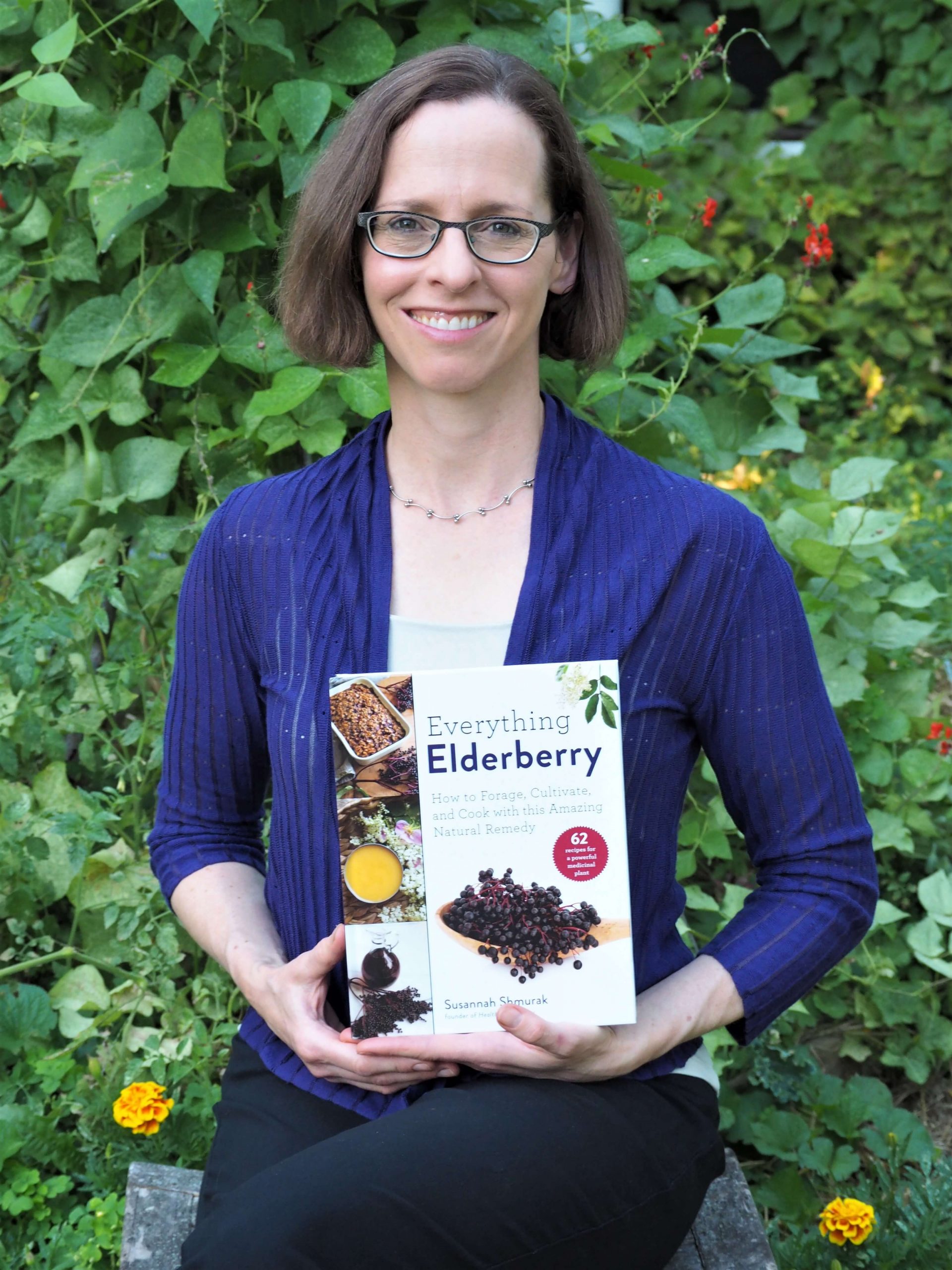Last Updated on January 3, 2024
Never tried “putting up” food before? Getting started with food preservation is easier than you think! No special skills or equipment required. Save money and shrink your foodprint with these super-simple beginner food preservation methods.  If you’ve ever balked at paying $5 a pound for peppers in January, get ready for some more affordable chili this winter! Now’s the time to put up some of those fleeting garden goodies while they’re plentiful in your garden and cheap at your farmers’ market. Find out how to preserve food, even if you’ve never preserved anything before.
If you’ve ever balked at paying $5 a pound for peppers in January, get ready for some more affordable chili this winter! Now’s the time to put up some of those fleeting garden goodies while they’re plentiful in your garden and cheap at your farmers’ market. Find out how to preserve food, even if you’ve never preserved anything before.
Why Try These Food Preservation Methods?
Freezing and drying even a little summer produce can save you money while making sure you have the highest-quality ingredients. No need to fork over big bucks for organic produce from thousands of miles away in wintertime if you put some up before the frost.
I’m guessing if you read this blog you’re interested in taking small steps to a greener, healthier life. One of the ways you can eat better for less while shrinking your foodprint is preserving some food for winter. It’s an excellent strategy for extending your seasonal eating into the months when nothing much is growing in your area.
Find lots more in my guide to eating healthy on a budget!
Savoring some preserved homegrown goodness can help if you’re one of the many folks who hate winter. Though they’re not quite the same as a fresh-picked tomato, preserved herbs, fruits, and veggies can help keep us connected to the plants we love and miss during the winter.
You don’t need any special equipment. Some simple drying and freezing takes no more know-how than giving things a quick rinse and maybe a little chopping!
Dehydrating food is an especially low-impact way to preserve, and if you’ve never done it before, drying some of your favorite herbs for winter cooking is a simple project to get you started preserving your own food.
Simple Food Preservation Methods: Drying
Before all that delicious thyme, oregano, rosemary and sage succumbs to the cold, snip off some sprigs to dry for winter. Simply rinse if you haven’t had a good rain in the last day or so, tie little bundles of your herbs together and hang upside down till they’re dry.
I use a ton of thyme in my cooking (like this delicious homemade pea soup), so I gather ginormous bunches of it from my CSA and let them dry in a mesh colander. I usually have enough to last me until the next season.
Then you can crumble them into a jar and enjoy them in soups on cold winter nights. You’ll save a lot over buying fresh herbs from the store. You can also collect herbs for homemade herbal tea like lemon balm, yarrow, and peppermint. Growing your own herbs is easy and rewarding. Here are herbs that grow in shade if your yard gets less than full sun.
A few tips for collecting herbs to dry:
- Collect your herbs in the morning after the dew has dried for the highest concentration of oils.
- If you can, gather your herbs at the bud stage, just before they flower. Not absolutely critical, but desirable.
- Hang out of direct sunlight somewhere warm and dry.
- They’re done when you can crumble them easily.
Other herbs with a higher water content (basil and cilantro, for example, which you can also freeze — see below!) do better in a dehydrator if you have access to one. You could also try using your oven, some screens in the sun or even your car on a sunny day!

Of course, you can dehydrate lots more with a little more effort and/or some additional equipment. Find out about different methods of dehydrating in this post, which focuses on using an electric dehydrator, but has links to other methods for dehydrating food.
Having a dehydrator on hand makes it a snap to make all kinds of healthy treats out of fruit that otherwise might go to waste, like overripe bananas (which make AMAZING dried bananas ‘candy‘) or so-so apples (here’s how to make chewy dehydrated apples) or best of all, homemade fruit leather, which we make from our abundant rhubarb. It’s also a great way to preserve an abundant crop of pears, peaches, and plums from your fruit trees. If you’ve never tried drying your own fruit, you will be amazed at how much better it tastes than anything you can buy.
Simple Food Preservation Methods: Freezing
Freezing is also an easy beginner’s food preservation method, though it requires electricity, and you are limited by freezer space. Most fruits and some vegetables require almost no special preparation before being tossed in the freezer. I’m all about no prep, so these are the things I pop in our freezer during the growing season:
- Peppers: My #1 freezer veggie! Peppers are still abundant and cheap in most parts of the country, so plan ahead and you’ll save a lot on winter chilis and pizza toppings. Peppers are some of the easiest veggies to freeze, as they require no cooking or blanching beforehand. Just cut ‘em up and put them in the freezer. I usually dice up a bunch of green peppers so I don’t have to buy them when they’re $4/ pound in winter and I need them for our favorite vegetarian chili recipe. Red peppers get sliced for use on homemade pizzas.
- Herbs: Basil, cilantro, and parsley freeze well. Just rinse, shake dry, put in a bag or container. Then crumble out frozen bits as you need them to top pizza or add to your favorite soup. (Note you should plan to use these in cooking rather than an uncooked recipe like fresh salsa or caprese salad. Greens get kind of mushy in the freezer!)
- Spinach: A huge pile of spinach can get quickly wilted and packed into a compact ball that takes up minimal freezer space. Some people freeze fresh spinach raw as well. Here’s what to know about how to freeze spinach.
- Fruit: When you have surplus berries (like foraged mulberries or blackberries) or if you find a deal on some, simply rinse and freeze on a cookie sheet, then put in containers or bags. Thawed raspberries are one of my favorites wintertime treats. If you get to be a rhubarb fan like me, you can freeze fresh rhubarb chunks or rhubarb sauce as well. Frozen rhubarb works beautifully for both easy rhubarb crisp and homemade fruit leather with rhubarb. Here’s to know about freezing rhubarb.
- Stone fruits like peaches and nectarines can be sliced and put in a single layer in a bag then crunched apart when you want them for smoothies. This works for bananas that need using up as well. Put the two together for our favorite banana ice cream!
- Leftovers: Use your surplus veggies to make extra ratatouille or chili and freeze the extra for a night you don’t have time to cook!
Whole or chopped tomatoes: I never have room in the freezer and generally prefer to dry tomatoes or cook them in ratatouille. but if you want to freeze some end-of-season tomatoes, you can actually put raw tomatoes in the freezer whole or chopped for winter cooking as well. (Like greens, they need to be cooked, as freezing makes them mushy.)
Freezing greens: It’s generally recommended you blanch them first. The only green I freeze is spinach, which I wilt in a frying pan before squeezing out the liquid and turning it into a spinach ball that I throw in soups at a later date.
If you want to know more about freezing other fruits and vegetables:
- This helpful guide from Easy Healthy Smoothie also has tips for time-saving smoothie prep.
- The National Center for Home Food Preservation is also an amazing resource for all kinds of food preservation. They can walk you through vinegar-based pickling and a host of other preservation methods when you’re ready to try more.
- And if you’re interested in making your own gut-friendly fermented vegetables, check out these beginners’ instruction for making fermented vegetables from Joybilee Farm.
Simple, right? It may not seem like much, but using these beginner food preservation techniques to put up even a little of summer’s bounty can get you on the road to eating much more locally, healthily, and cheaply year round.
Ever tried preserving your own food? What are your favorite simple food preservation methods & projects?
Pin to save these easy food preservation methods for later!
Photo credits: Christopher Paquette, Caitlin Regan, Sergey Kukota, tribp via Flickr

Susannah is a proud garden geek and energy nerd who loves healthy food and natural remedies. Her work has appeared in Mother Earth Living, Ensia, Northern Gardener, Sierra, and on numerous websites. Her first book, Everything Elderberry, released in September 2020 and has been a #1 new release in holistic medicine, naturopathy, herb gardening, and other categories. Find out more and grab your copy here.


 Hi, I'm Susannah, a garden geek, energy nerd, and fan of healthy food and natural remedies. Need some simple, practical solutions for living healthier and greener? You've come to the right place! More about me and my green projects
Hi, I'm Susannah, a garden geek, energy nerd, and fan of healthy food and natural remedies. Need some simple, practical solutions for living healthier and greener? You've come to the right place! More about me and my green projects